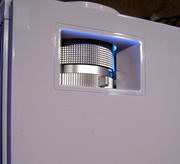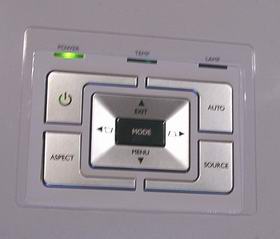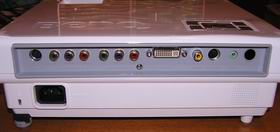- BenQ W100 Entry Level Home Theater Digital Projector Review
- BenQ W100 Entry Level Home Theater Digital Projector Review - Physical Overview
- BenQ W100 Digital Projector Review - Image Quality
- BenQ W100 Digital Projector Review - Image Quality 1
- BenQ W100 Digital Projector Review - Image Quality 2
- BenQ W100 Projector Reviews - General Performance
- BenQ W100 Projector Reviews - General Performance 1
- BenQ W100 Projector Reviews - General Performance 2
- BenQ W100 Projector Reviews - General Performance 3
- BenQ W100 Projector Reviews - General Performance 4
- Projector Reviews - General Performance 4
- BenQ W-100 Projector - Warranty
- BenQ W100 Digital Projector Review: Summary, Pros, Cons
- BenQ W100 Digital Projector Review: Summary, Pros, Cons 1
- BenQ W100 Projector Specifications
- Home
- All Reviews
- By Category
- By Manufacturer
- Best Projectors
- Best Projectors By Category
- Best Projectors On Amazon
- Best 4K Projectors
- Best Ultra Short Throw Projectors
- Best Laser TVs
- Best Gaming Projectors
- Best Home Theater Projectors
- Best Projectors Under $1,000
- Best Projectors Under $500
- Best Portable Projectors
- Best Outdoor Projectors
- Best Bright Budget-Friendly Outdoor Projectors
- Best Battery Powered Outdoor Projectors
- Best Outdoor Projection Screens
- Industry News
- Reports
- Projector Manufacturers
- Manufacturer Terminology
- Manufacturers
- Recent Articles
- Custom Integration
- Projection Terms
- Projector Manufacturers Categories
- Videos
- Blog
Close
Menu
- All Reviews
- By Category
- By Manufacturer
- Best Projectors By Category
- Best Projectors On Amazon
- Best 4K Projectors
- Best Ultra Short Throw Projectors
- Best Laser TVs
- Best Gaming Projectors
- Best Home Theater Projectors
- Best Projectors Under $1,000
- Best Projectors Under $500
- Best Portable Projectors
- Best Outdoor Projectors
- Best Bright Budget-Friendly Outdoor Projectors
- Best Battery Powered Outdoor Projectors
- Best Outdoor Projection Screens
- Latest News
- Reports & Guides
- Manufacturers
- Articles
- Custom Integration
- Projection Terms
- Blog
close




